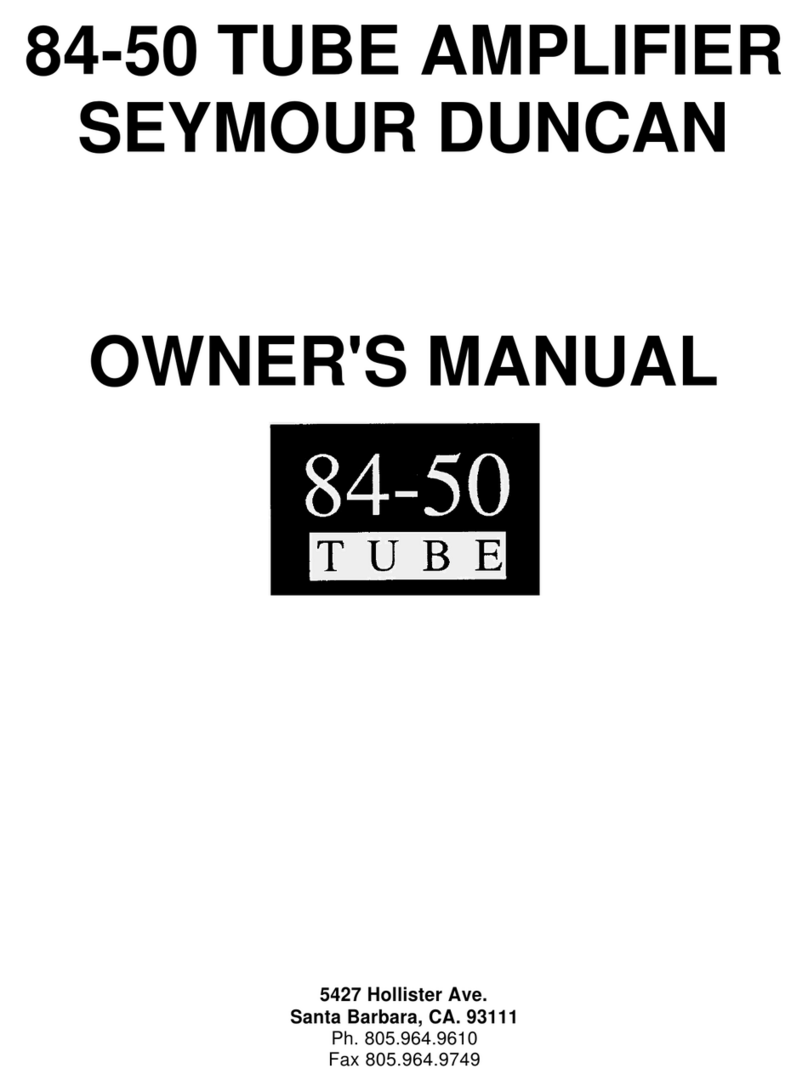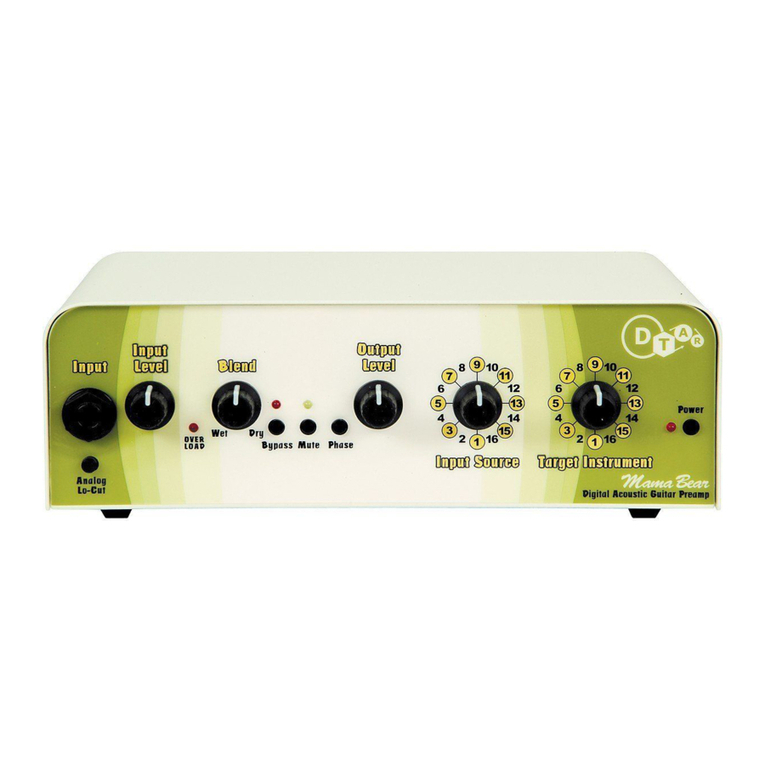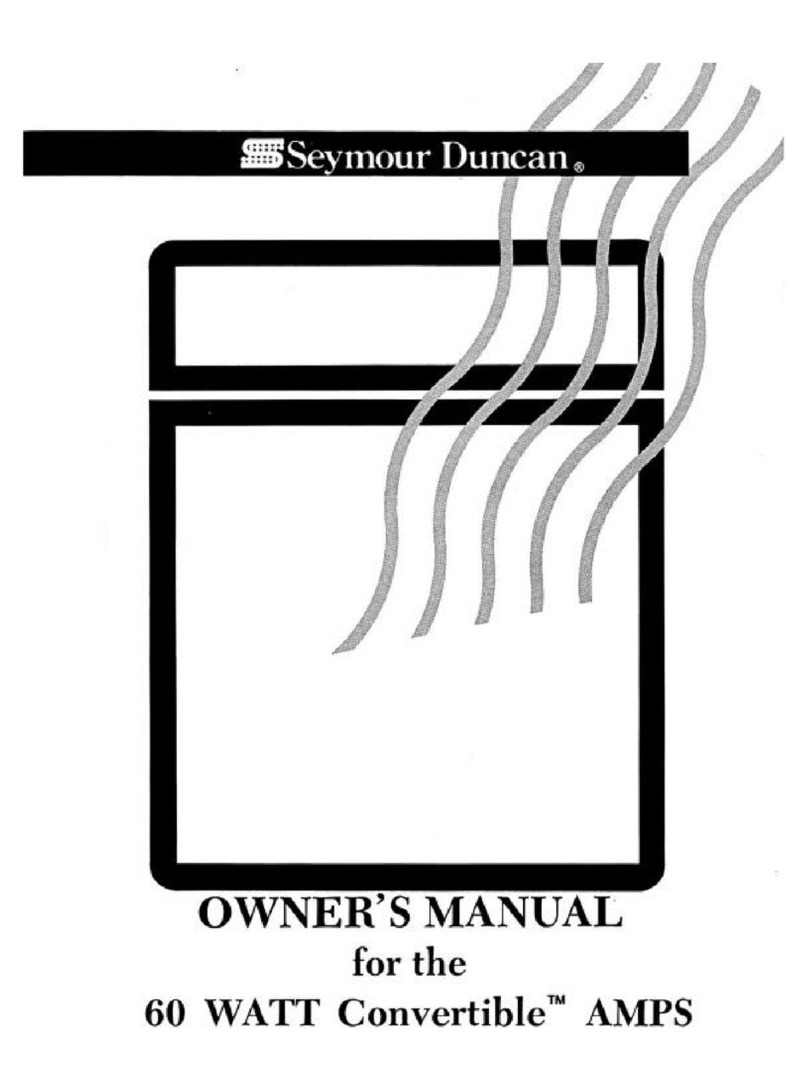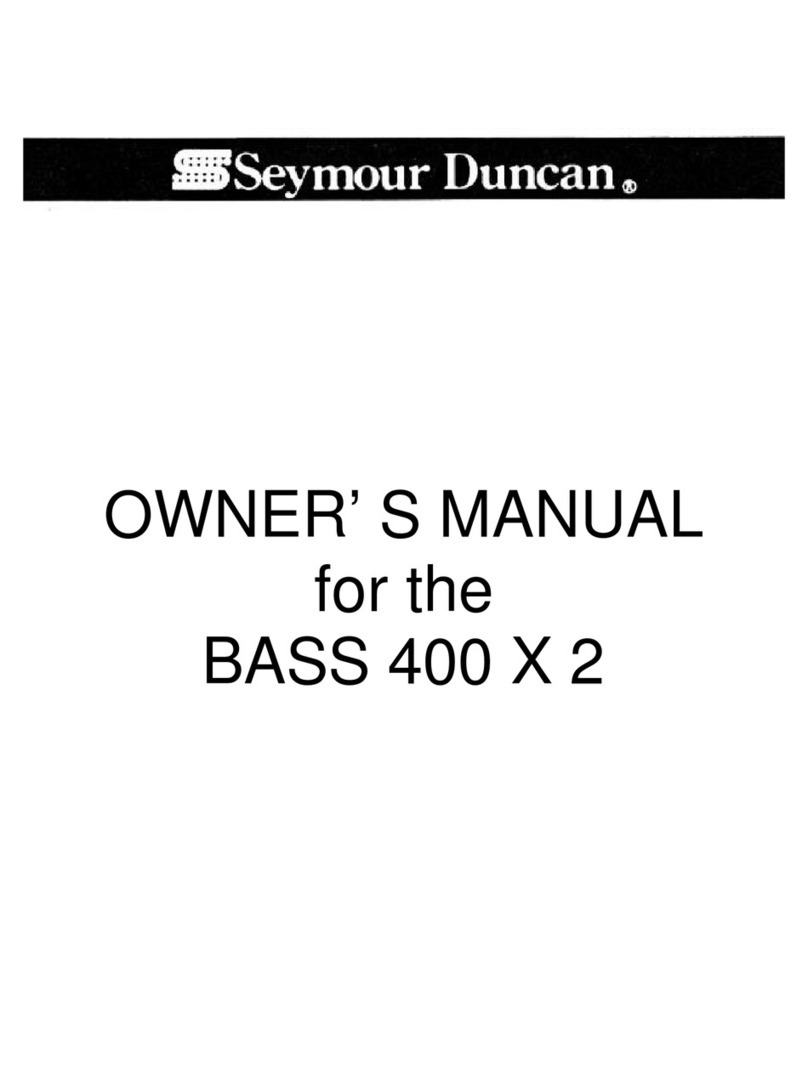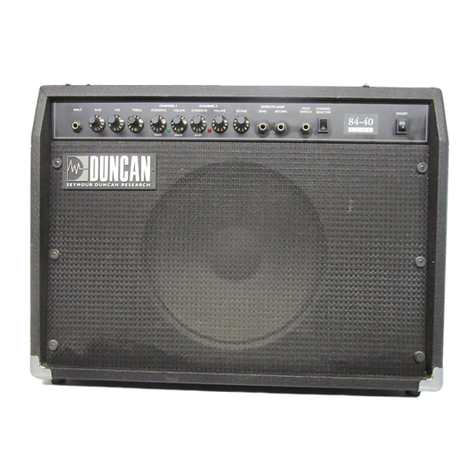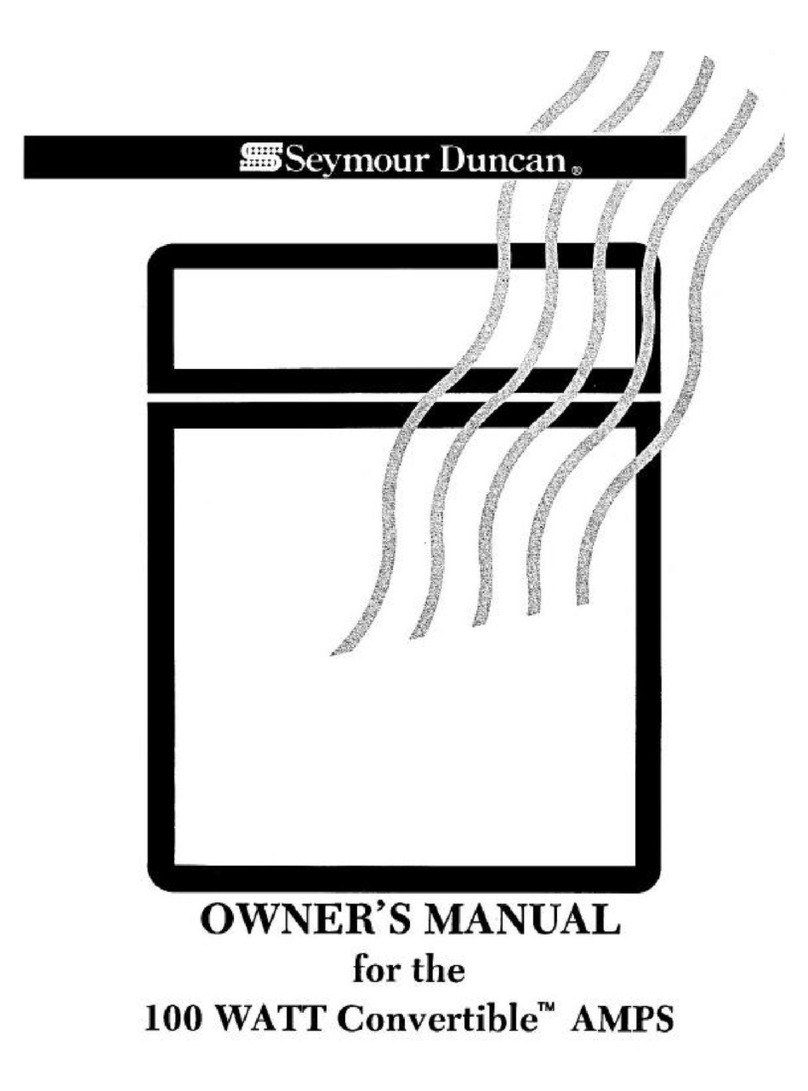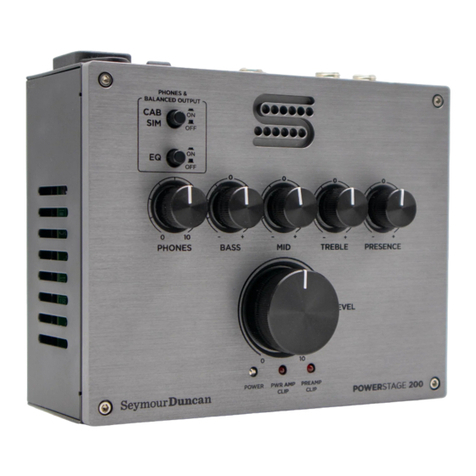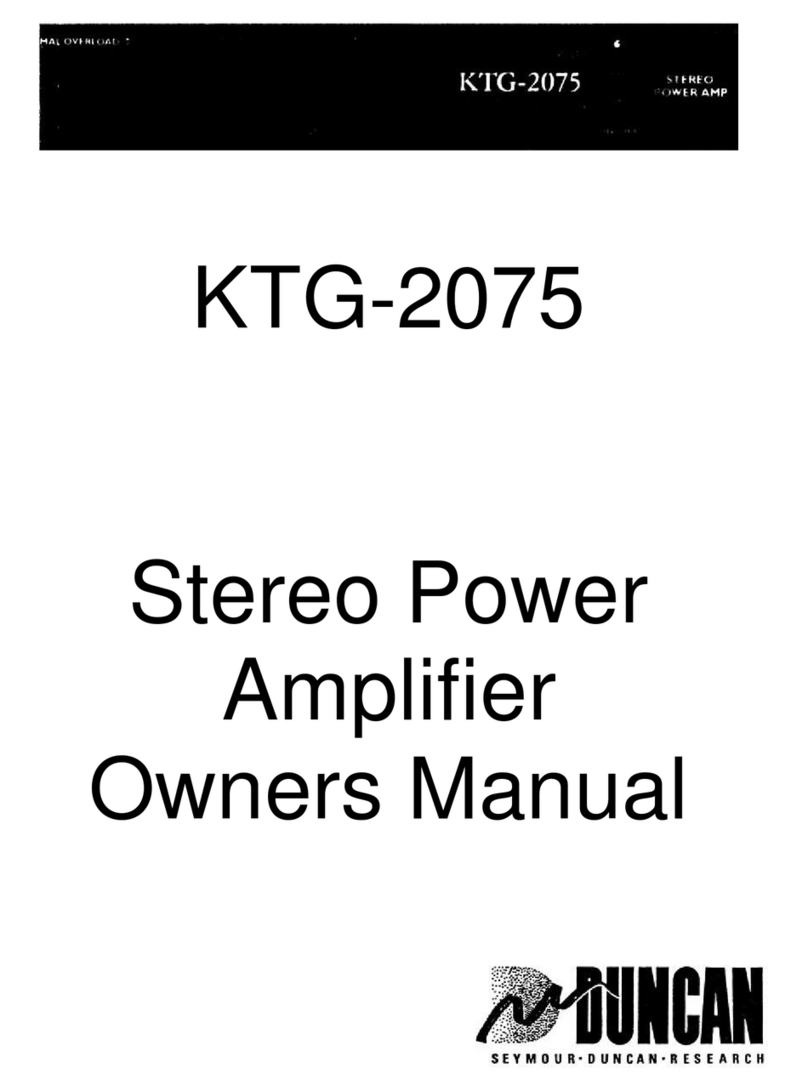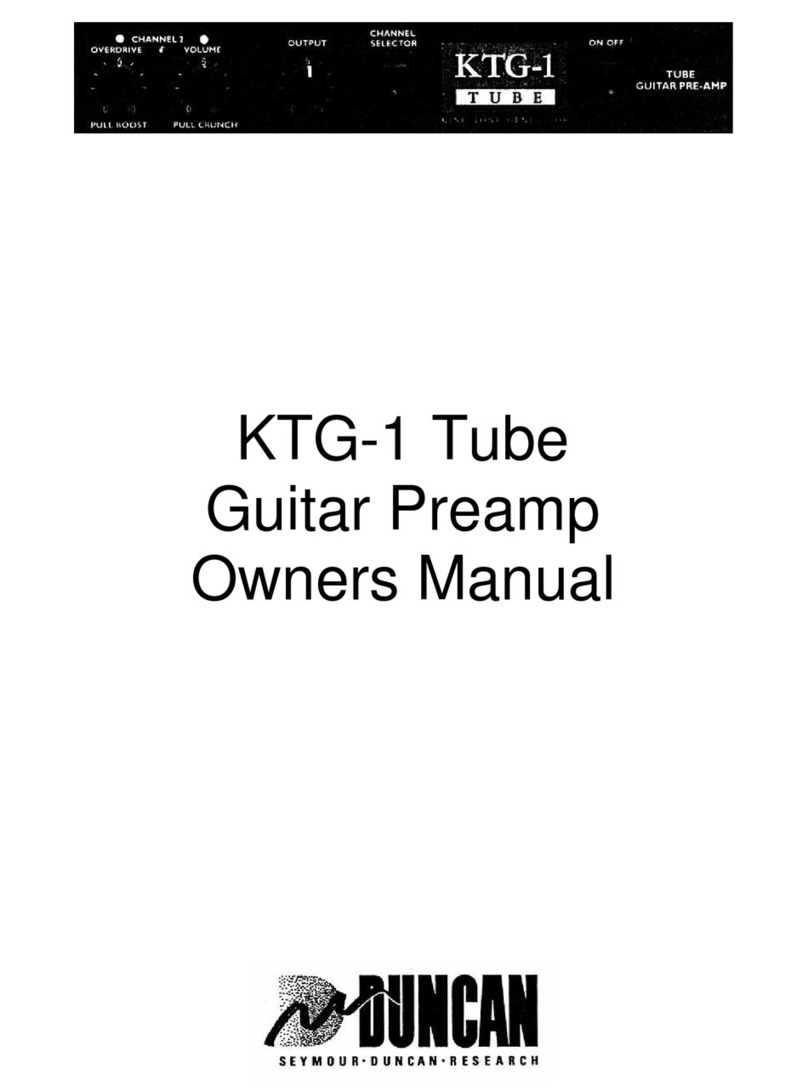
Introduction
Congratulations on your purchase of the Seymour Duncan Acoustic Environment
Control™. In one compact battery-powered package we have combined the functions of:
• FEEDBACK ELIMINATOR
• An activeDIRECT BOX
• A PREAMPLIFIER with gain and tone controls
This multi-purpose product has been crafted specifically to fill the needs of the acoustic
guitarist.
Every feature has been specifically chosen to give you an unprecedented amount of
control over your sound while allowing the flexibility to handle virtually any playing
situation.
Anti-feedback controls have been optimized to allow high sound pressure levels without
annoying feedback. There are two separate 1/4" inputs (one with 6 dB extra gain) with
extremely high input impedance to improve the sound of unbuffered piezo saddle-type
pickups from Martin/Fishman/Baggs. One of the 1/4" outputs will drive a power amp to
full power. The other 1/4" output is instrument level, so you can plug it into a combo
amplifier or a mixing board. The high quality, transformer coupled, direct (XLR) output
gives you a quiet balanced output for recording or to use as a house feed for sound
reinforcement. You can use the A E C preamp as a battery powered direct box with tone
controls! The notch filter with sweepable frequency and variable depth will allow you to
get rid of annoying acoustic feedback in almost any room. In short, we think you will find
your Acoustic Environment Control preamplifier has the flexibility to handle any playing
situation, from solo club gigs to studio work.
A Discussion on Feedback
An acoustic guitar, which sounds warm, rich and responsive when, played without
amplification can feedback annoyingly when amplified. The sound from the speakers
interacts with the guitar's natural resonance to cause feedback. There are two dominant
resonant sources, the air cavity and the soundboard. The air cavity is the lower of the
two, generally falling around 10OHz. The soundboard, which produces 90% of the
guitar's acoustic output, resonates around 20OHz.
Our A E C™ preamplifier has several features, which are designed to control unwanted
feedback. The phase switch is used to knock out the air cavity resonance of the guitar
and the notch filter is used to control the soundboard resonance. The phase switch
inverts the polarity of the amplifier's output relative to the resonance of the guitar.
Changing the phase of the output signal can effectively control the low frequency air
cavity resonance, although in very loud settings you may actually need to block the
sound hole. The notch filter is extremely useful in controlling sound board feedback.
Once the notch filter is "tuned" to your guitar's soundboard, the depth control can be
used to cut more or less depending on how loud you are playing. You only want to notch
out "just enough" to control feedback so that the guitar retains as much of its acoustic
characteristics as possible. Proper use of the phase and notch controls will allow you to
play at high volume levels without feedback and without unduly compromising the
natural timbre of your instrument.
